#jack mcfarland icons
Explore tagged Tumblr posts
Text
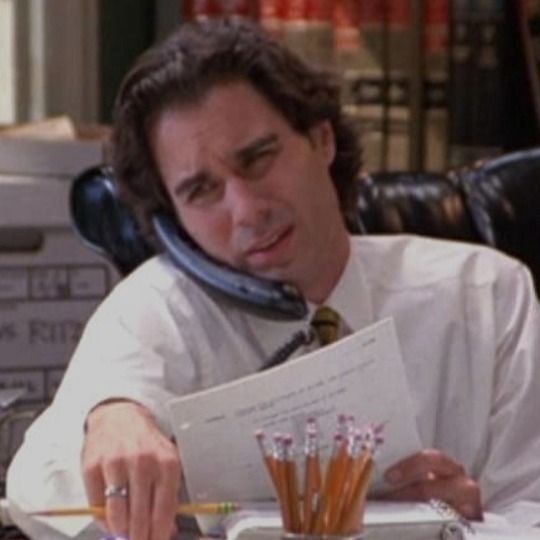
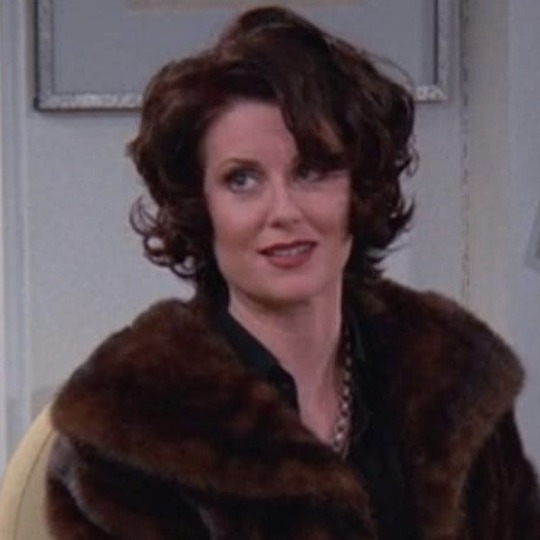



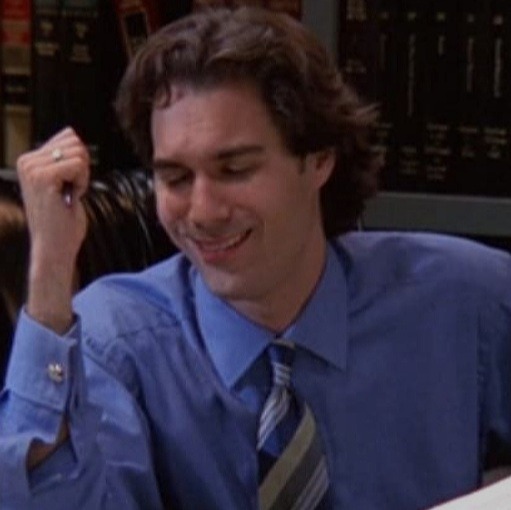

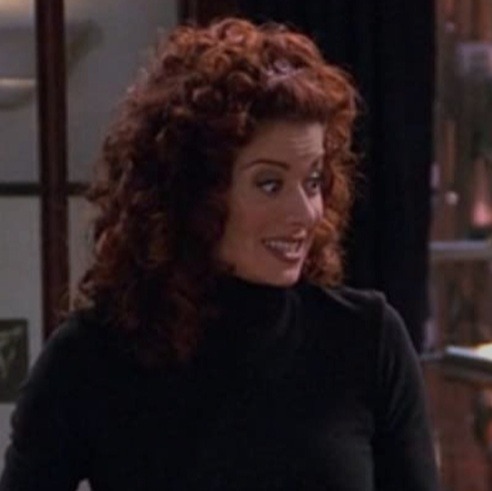

will and grace icons
like/reblog if you save
#will and grace icons#will and grace#will & grace#will & grace icons#random icons#icons without filter#actor icons#actress icons#90s icons#90s tv shows#90s aesthetic#tv shows icons#tv show icons#will truman icons#grace adler icons#karen walker icons#jack mcfarland icons#debra messing#sean hayes#eric mccormack#megan mullally#lq icons#low quality#low quality icons
43 notes
·
View notes
Photo









@sitcomsgirI or like
16 notes
·
View notes
Photo










please like if you save or use one of them :)
thanks!!
#megan mullally#megan mullally icons#icons#karen walker#karen walker icons#will and grace#will and grace headers#sean hayes#jack mcfarland
64 notes
·
View notes
Text

20 years ago this iconic Will and Grace moment happened!!! (February 22nd)
71 notes
·
View notes
Photo




#will and grace#willandgraceedit#wagedit#will truman#jack mcfarland#iconic friendship#will x jack#jack x will#will and jack
3K notes
·
View notes
Photo
Seriously how goddamn hot is Eric McCormack in these… like damn you wear those giant 90 jeans 🔥🔥🔥



WILL & GRACE 2x08 - Homo for the Holidays
133 notes
·
View notes
Photo









will and grace s09e01 / like or @theblindsided
#icons#will and grace#nbc#season 9#s9e01#debra messing#eric mccormack#megan mullally#sean hayes#grace adler#will truman#karen walker#jack mcfarland
14 notes
·
View notes
Text
- Look at you, you're like an icon to gay man! You've got:

The Sass

The Class

The Ass™
- Jack McFarland, from Will & Grace
#the tm in the ass is from will#thats wills ass#i was watching will and grace#and that quote ringed hannibal immediately#hannibal#nbc hannibal#hannigram#hannibal x will#hannibal lecter#murder husbands#will graham
52 notes
·
View notes
Text
"Scholars have painted the cowboy not just as a ‘get-the-government-out-of-my-business’ icon of Movement Conservatism, but also as an icon of imperialism, racism and misogyny. [Glen H.] Taylor, however, wasn’t the only cowboy progressive of the first half of the 20th century. As Greg Grandin points out in The End of the Myth (2019), quite a few ‘cowboy radicals’ found homes in the Industrial Workers of the World, most notably Big Bill Haywood, who fled to the Soviet Union in 1921 to escape prosecution under the Espionage Act. Though less radical than Haywood, other cowboy politicians in Mountain West states endorsed activist government. The most successful of them included Taylor’s fellow Idahoan, C Ben Ross; Wyoming governor and senator, John B Kendrick; and Arizona senator Henry Ashurst (‘Silver-Tongued Sunbeam of the Painted Desert’). In Texas, meanwhile, an even more powerful cowboy politician and civil rights supporter, Lyndon Johnson, rose to prominence.
Cowboy progressives also shaped popular culture. Will Rogers, the cowboy humorist from the Cherokee Nation, became the nation’s most popular ‘philosopher’ in the years leading up to the Great Depression. According to his biographer, he ‘possibly did more than any other American to convince the public to accept the overall New Deal’. Rogers was helped in that endeavour by Gene Autry, the nation’s leading cowboy singer from the 1930s until his retirement in 1962. Autry was a self-proclaimed ‘New Deal cowboy’ who made movies and sang music intended to popularise Roosevelt’s policies. He also wrote the ‘Ten Cowboy Commandments’, which demanded that the cowboy ‘must not advocate or possess racially or religiously intolerant ideas’. Though he turned conservative in his later years (trailing his herd of fabulous riches), he made appearances for progressive Democrats into the 1950s, including both McFarland and Lyndon Johnson. Another friend of Johnson, the great cowboy folklorist J Frank Dobie, stood even further to the Left. In the 1940s – at the time Arizona Democrats put civil rights on their political map – Dobie spoke alongside civil rights leaders in Texas and wrote anti-monopoly screeds that the FBI deemed communistic.
Despite the plenitude of cowboy progressives, the cowboy-as-reactionary remains ubiquitous in the annals of scholarship. The history of cowboy progressives has yet to be written. Scholars who may wish to pursue that task would do well to follow the lead of the historian Jack Weston, author of the monograph The Real American Cowboy (1985). Weston carefully appraised – and denounced – the racism among both real cowboys and their mythic counterparts. Weston, however, argued that the cowboy myth – despite its racist freight – was created not as a weapon against Reconstruction era racial reforms, but as compensation for the alienation that Americans experienced in the Gilded Age: their separation from nature, their diminished power to control their fate, their need for ‘a fantasy of a preindustrial, rural society’. The chronology of the cowboy hero supports his thesis. The first cowboy novel to achieve notable commercial success – Prentiss Ingraham’s Buck Taylor, King of the Cowboys (1887) – appeared fully 10 years after the Compromise of 1877 ended the Reconstruction era.
None of which is to say that Weston viewed the ‘cowboy myth’ as homogeneous: he distinguished between Horatio Alger-style cowboys of ‘property westerns’ like Owen Wister’s novel The Virginian: A Horseman of the Plains (1902) and ‘community-saving’ cowboys of dime novels, Police Gazette tales, and B westerns. The community-savers, argued Weston, remained staples in popular culture into the 1950s, when property-saving cowboys – like John Wayne in Red River (1948) – crowded them out.
Arguably, cowboy progressives like Glen Taylor adopted the ethos of the community-savers. Behind that ethos, or perhaps alongside it, stood the old populist resistance to monopolies, economic imperialism, and the ‘Eastern establishment’. Even if the West didn’t always elect cowboy figures, the progressives whom they did elect reflected populist sensibilities."
- Daniel J. Herman, from "Cowboy progressives." Aeon, 8 April 2022.
#daniel j. herman#quote#quotations#cowboys#history#american history#progressivism#activism#democratic socialism#will rogers#glen h taylor#gene autry#american culture#american politics#civil rights movement
2 notes
·
View notes
Photo

mood
#mood#karen walker#will and grace#me af#megan mullally#jack mcfarland#sean hayes#idol#icon#nobody matters but me#gay
4 notes
·
View notes
Text










matching icons
like / reblog if you save ♡
#matching icons#matching profile pictures#sitcom icons#sitcoms#community icons#trobed#sex and the city icons#will and grace icons#mondler icons#phoey icons#friends icons#samantha jones#charlotte york#abed nadir icons#troy barnes icons#jack mcfarland#karen walker#monica geller icons#chandler bing icons
232 notes
·
View notes
Photo









credits to @sitcomsgirI on twitter!
like if u save.
#will and grace#will and grace icons#will & grace icons#will truman icons#grace adler icons#karen walker#jack mcfarland icons#icons
32 notes
·
View notes
Text
We asked gay icon Jack McFarland: What exactly is “Ogay”?
We asked gay icon Jack McFarland: What exactly is “Ogay”? | #IonFury #Steam #censorship #ResetEra #gaming
Last week, Ion Fury developer Voidpoint apologized after individuals from Reset Era criticized content in the game that they found offensive, including an image of a personal skincare bottle jokingly labeled “Ogay” (an “Olay” pun, in case you needed it spelled out).
After the complaints surfaced, Voidpoint announced that they would donate $10,000 to The Trevor Project (an LGBT anti-suicide…
View On WordPress
#3D Realms#censorship#Featured#Ion Fury#Nintendo#PC#Playstation#PS4#Reset Era#Steam#Switch#Voidpoint#Will & Grace#Xbox One
1 note
·
View note
Photo
People who are offended are...not getting the point or properly contextualizing it for a 90s TV show. This was the first show that not only centered around gay characters, but tackled gay issues. They had the first male/male kiss on television, just 7-8 years after the worst decade for the gay community. I was SIX and I remember how big of a deal it was.
This was a marketing decision that would trick closed minded people into actually watching it. Anyone who wasn't a homophope was well-aware that Will and Grace were never going to get together because it showed nothing but a supportive, healthy friendship. The onus was on the viewer to believe they would fall in love. I am so happy to have grown up with it.
As for Barrowman, he was "too gay" because they wanted him to play Will, who was more level-headed than (the iconic) Jack Mcfarland, the more stereotypical and overly flamboyant of the two. They still could have hired a gay actor but their intentions were genuine and I'm sure if it was on air today they would have made that decision. Either way, it not only showed that it was acceptable to have shows about gay people and their lives, but how they were just regular people with the same problems as straight people; they could have the same friendships as straight people; they could be just as funny or feel the same heartbreak as straight people; but there were also things gay people went through that straight people would never struggle with. It paved the way for every lgbt show since.
Also Karen Walker
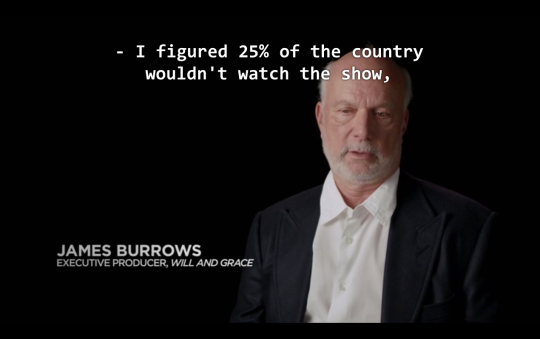
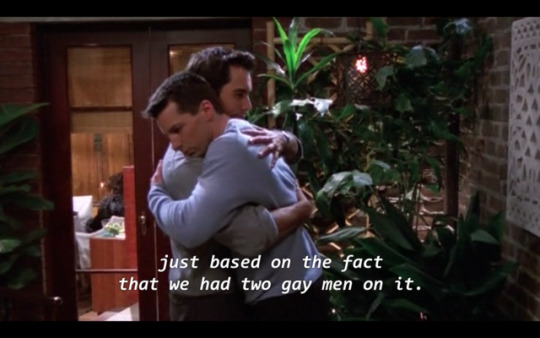
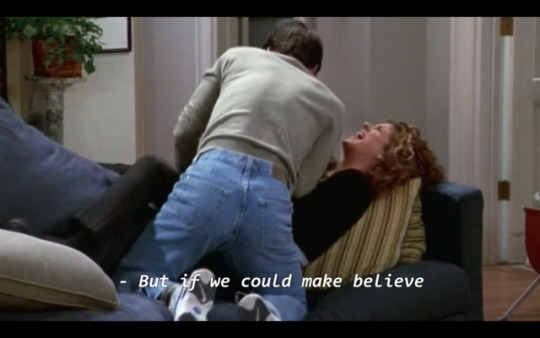
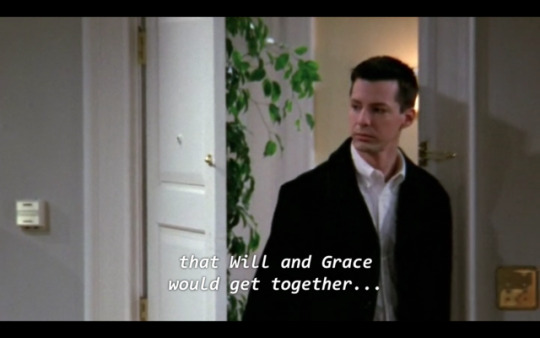
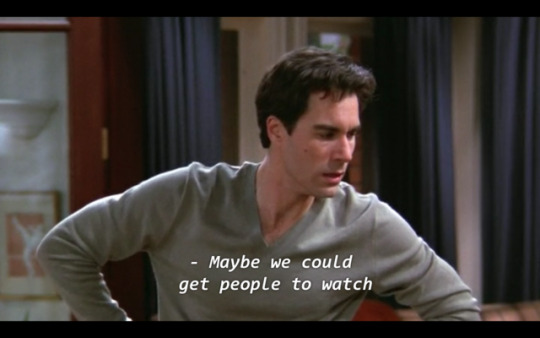
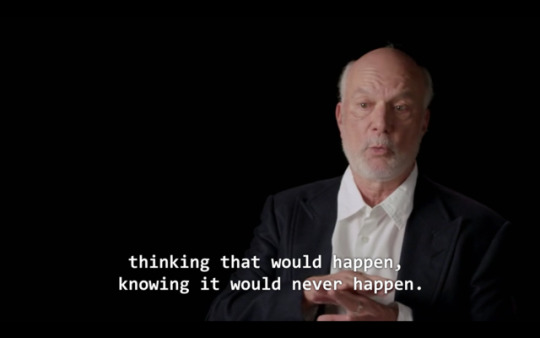
asklfjals;kfh the producers of will and grace were really out there straightbaiting in 1998
153K notes
·
View notes
Text
Jack McFarland, a gay icon, watches riverdale
#dont know how to feel aboit this#will and grace#jack mcfarland#will truman#grace adler#karen walker
1 note
·
View note
Text
The best available players after Round 1 of the 2020 NFL Draft
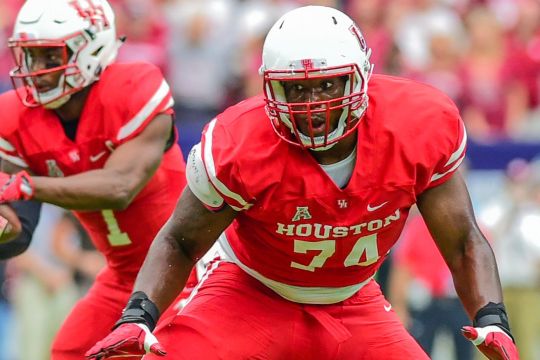
Photograph by Ken Murray/Icon Sportswire via Getty Images
Houston offensive tackle Josh Jones highlights the best players for the second round on Friday.
In the end, after several twists, turns and false rumors, the beginning of the 2020 NFL Draft went as usual. And that goes beyond Joe Burrow going first and Chase Young going second. The Lions took cornerback Jeff Okudah at No. 3. The Giants took an offensive tackle. Tua Tagovailoa went to the Dolphins like most expected until people started assuming they would take Justin Herbert. The Chargers wisely took the best quarterback that fell to them in Herbert.
But not everything went according to plan. The wide receivers came off the board in an order few expected. Same for the offensive tackles. The first round was also filled with some stunners, like the Green Bay Packers moving up for quarterback Jordan Love or the Seattle Seahawks holding at No. 27 and taking linebacker Jordyn Brooks.
Those unexpected picks meant some big names fell out of the first round. Here are the best players available at the start of the second round of the 2020 NFL Draft, based on SB Nation’s top 100 players and then some:
21. Josh Jones, OT, Houston
22. A.J. Epenesa, Edge, Iowa
23. Grant Delpit, S, LSU
25. Yetur Gross-Matos, Edge, Penn State
26. Xavier McKinney, S, Alabama
27. Ezra Cleveland, OT, Boise State
28. Antoine Winfield Jr., S, Minnesota
31. Laviska Shenault Jr., WR, Colorado
32. D’Andre Swift, RB, Georgia
33. J.K. Dobbins, RB, Ohio State
34. Jonathan Greenard, Edge, Florida
35. Trevon Diggs, CB, Alabama
36. Denzel Mims, WR, Baylor
40. Ross Blacklock, DL, TCU
43. Jonathan Taylor, RB, Wisconsin
44. Tee Higgins, WR, Clemson
46. Michael Pittman Jr., WR, USC
47. Prince Tega Wanogho, OT, TCU
48. Jaylon Johnson, CB, Utah
49. Kristian Fulton, CB, LSU
50. Marlon Davidson, DL, Auburn
51. Curtis Weaver, Edge, Boise State
52. Lloyd Cushenberry, C, LSU
53. Justin Madubuike, DL, Texas A&M
54. Cameron Dantzler, CB, Mississippi State
56. KJ Hamler, WR, Penn State
57. Zack Baun, LB, Wisconsin
58. Kyle Dugger, S, Lenoir-Rhyne
59. Terrell Lewis, Edge, Alabama
60. Cam Akers, RB, Florida State
61. Julian Okwara, Edge, Notre Dame
62. Jeremy Chinn, S, Southern Illinois
63. Neville Gallimore, DL, Oklahoma
64. Robert Hunt, G, Louisiana
65. Matt Peart, OT, Connecticut
66. Josh Uche, Edge, Michigan
67. Bryan Edwards, WR, South Carolina
68. Van Jefferson, WR, Florida
69. Zack Moss, RB, Utah
70. Cole Kmet, TE, Notre Dame
71. Saahdiq Charles, OT, LSU
72. Jacob Eason, QB, Washington
73. Chase Claypool, WR, Notre Dame
74. Jabari Zuniga, Edge, Florida
75. Adam Trautman, TE, Dayton
76. Lucas Niang, OT, TCU
77. Jalen Hurts, QB, Oklahoma
78. Matt Hennessy, C, Temple
80. Jordan Elliott, DL, Missouri
81. Harrison Bryant, WR, Florida Atlantic
82. Alex Highsmith, Edge, Charlotte
83. Ashtyn Davis, S, California
84. Amik Robertson, CB, Louisiana Tech
85. Hunter Bryant, TE, Washington
86. Damien Lewis, G, LSU
87. James Lynch, DL, Baylor
89. Eno Benjamin, RB, Arizona State
90. Devin Duvernay, WR, Texas
91. Reggie Robinson, CB, Tulsa
92. Darrell Taylor, Edge, Tennessee
93. Akeem Davis-Gaither, LB, Appalachian State
94. Leki Fotu, DL, Utah
95. AJ Dillon, RB, Boston College
96. Khalid Kareem, Edge, Notre Dame
97. K’Von Wallace, S, Clemson
98. Willie Gay Jr., LB, Mississippi State
99. Colby Parkinson, TE, Stanford
100. Bradlee Anae, Edge, Utah
101. Jack Driscoll, OT, Auburn
102. Antonio Gibson, RB, Memphis
103. Lynn Bowden, WR/RB/QB, Kentucky
104. Alton Robinson, Edge, Syracuse
105. Raekwon Davis, DL, Alabama
106. Jonah Jackson, G, Ohio State
107. Tyler Biadasz, C, Wisconsin
108. Kenny Willekes, Edge, Michigan State
109. Jake Fromm, QB, Georgia
110. Gabriel Davis, WR, UCF
111. Netane Muti, G, Fresno State
112. Davon Hamilton, DL, Ohio State
113. Albert Okwuegbunam, TE, Missouri
114. Josiah Scott, CB, Michigan State
115. Collin Johnson, WR, Texas
116. Thaddeus Moss, TE, LSU
117. Troy Dye, LB, Oregon
118. Anfernee Jennings, Edge, Alabama
119. Antonio Gandy-Golden, WR, Liberty
120. Rashard Lawrence, DL, LSU
121. Trey Adams, OT, Washington
122. Jonathan Garvin, Edge, Miami
123. Nick Harris, C, Washington
124. Ke’Shawn Vaughn, RB, Vanderbilt
125. John Simpson, G, Clemson
126. Logan Wilson, LB, Wyoming
127. Ben Bartch, OT, Saint John’s (Minn.)
128. Kenny Robinson, S, West Virginia/XFL
129. John Hightower, WR, Boise State
130. Terrell Burgess, S, Utah
131. Devin Asiasi, TE, UCLA
132. Jason Strowbridge, DL, North Carolina
133. Alex Taylor, OT, South Carolina State
134. Logan Stenberg, G, Kentucky
135. Malik Harrison, LB, Ohio State
136. John Reid, CB, Penn State
137. Jared Pinkney, TE, Vanderbilt
138. Donovan Peoples-Jones, WR, Michigan
139. Lamar Jackson, CB, Nebraska
140. Joshua Kelley, RB, UCLA
141. Geno Stone, S, Iowa
142. Anthony Gordon, QB, Washington State
143. Tyler Johnson, WR, Minnesota
144. Anthony McFarland, RB, Maryland
145. Larrell Murchison, DL, North Carolina State
146. K.J. Hill, WR, Ohio State
147. A.J. Green, CB, Oklahoma State
148. Brandon Jones, S, Texas
149. Jauan Jennings, WR, Tennessee
150. Khalil Davis, DL, Nebraska
151. James Proche, WR, SMU
152. Bryce Hall, CB, Virginia
153. Markus Bailey, LB, Purdue
154. Calvin Throckmorton, OT, Oregon
155. Troy Pride Jr., CB, Notre Dame
156. Darryl Williams, C, Mississippi State
157. Benito Jones, DL, Ole Miss
158. Alohi Gillman, S, Notre Dame
159. Stanford Samuels III, CB, Florida State
160. Danny Pinter, G, Ball State
161. Derrek Tuszka, Edge, North Dakota State
162. Isaiah Hodgins, WR, Oregon State
163. Cole McDonald, QB, Hawaii
164. Joe Bachie, LB, Michigan State
165. Lavert Hill, CB, Michigan
166. Brycen Hopkins, TE, Purdue
167. J.R. Reed, S, Georgia
168. Quintez Cephus, WR, Wisconsin
169. McTelvin Agim, DL, Arkansas
170. Jacob Phillips, LB, LSU
171. Rodrigo Blankenship, K, Georgia
172. Darrynton Evans, RB, Appalachian State
173. Nate Stanley, QB, Iowa
174. Trajan Bandy, CB, Miami
175. D.J. Wonnum, Edge, South Carolina
176. Quartney Davis, WR, Texas A&M
177. Tanner Muse, S, Clemson
178. Davion Taylor, LB, Colorado
179. Solomon Kindley, G, Georgia
180. Stephen Sullivan, TE, LSU
181. Carlos Davis, DL, Nebraska
182. Essang Bassey, CB, Wake Forest
183. Kevin Dotson, G, Louisiana
184. Kalija Lipscomb, WR, Vanderbilt
185. Lamical Perine, RB, Florida
186. Carter Coughlin, Edge, Minnesota
187. Cam Brown, LB, Penn State
188. Levonta Taylor, S/CB, Florida State
189. Michael Onwenu, G, Michigan
190. Robert Landers, DL, Ohio State
191. David Woodward, LB, Utah State
192. Mason Fine, QB, North Texas
193. Trevis Gipson, Edge, Tulsa
194. Tyre Phillips, OT, Mississippi State
195. Michael Warren, RB, Cincinnati
196. Michael Ojemudia, CB, Iowa
197. Evan Weaver, LB, California
198. Jeff Thomas, WR, Miami
199. Nick Coe, Edge, Auburn
200. Dane Jackson, CB, Pittsburgh
0 notes